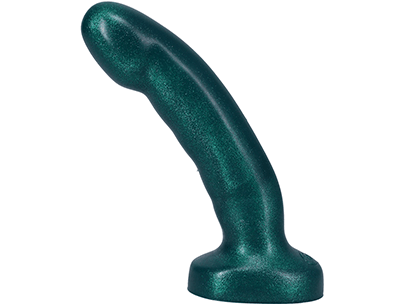There’s a lot of confusion and squabble over the phenomenon known as female ejaculation, or the cruder but more fun-to-say term used interchangeably, “squirting.” Some believe it’s a myth, while others swear they’ve been able to make it happen. It’s been depicted in the media as a deluge of gallons of super-soaking wetness; others describe it as a more anti-climactic dribble of a few teaspoons (although this is different from cervical fluid, the naturally occurring female lubricant that preps the vagina for penetration).
The reason it remains such a mystery is similar to that of the g-spot. There simply is a dire lack of scientific research into it. So much about women’s bodies and pleasure is unstudied, leaving people with vaginas to come to their own conclusions about certain sexual activities and possibilities. We can probably look to a history of sexism in the medical and scientific fields, including Freud’s ideas about clitoral orgasms being “immature”; the massive overdiagnosis of hysteria, the belief that one’s uterus would wander around the body, forcing its owner to act in all sorts of unfeminine ways; the exclusion of women from medical trials up until 2000; the lower likelihood of surviving a heart attack; and the list goes on. Anyway, let’s find out what this squirting thing is all about.
What is squirting?
When someone with a vulva is engaged in sexual activity and they expel fluid from their urethra, that’s squirting.
Not all people are capable of squirting. Some can do it automatically, some yearn to squirt and practice different methods to achieve squirting, and some people don’t do it at all.
Some report it only occurs as a result of an orgasm, and some squirters say it happens spontaneously to signal arousal. Some squirt a small amount, and some squirt enough to thoroughly dampen the sheets, enough to necessitate frequent trips to the laundromat. Science is still out on a rhyme or reason why some women squirt and some don’t. The International Society for Sexual Medicine estimates about 10-50% of women have ejaculated in some form, which is a pretty big estimated range, once again highlighting the need for more research into this occurrence that is apparently quite common.
According to Medical News Today, there are two types of fluid that are expelled. They are distinguished by the two very medical terms, “ejaculate fluid” and “squirting fluid.” Ejaculate is a thicker, milky white fluid that more closely resembles male ejaculate. Squirting fluid is colorless and odorless and is usually emitted in larger quantities.
Is squirt pee?
A 2014 study published in the Journal of Sexual Medicine analyzed the biochemical makeup of squirting fluid in an attempt to explain its origin. The seven subjects of the study, who all reported “recurrent and massive fluid emission,” urinated before sexual activity to confirm bladder emptiness. A scan of the bladder, however, found that the bladder refilled during arousal and read as empty again after ejaculation. Analysis of the fluid confirmed that it consisted of urea, creatinine, and uric acid across all the participants. Indeed, the study concluded that “squirting is essentially the involuntary emission of urine during sexual activity, although a marginal contribution of prostatic secretions to the emitted fluid often exists.” So according to this study, it is pee plus a little something extra, the addition of prostatic‐specific antigens, or PSA.
Studies about the composition of female ejaculate (the milky, thick substance, not the colorless, odorless squirting fluid) are harder to come by. It seems to contain mainly prostatic secretions with just a hint of the chemicals composed of urine. This phenomenon seems to be less common than squirting.
Hold up – did you just say the prostatic secretions? Do women have a prostate, then?
Biologically female people do indeed have an anatomical structure homologous to the male prostate. It’s a set of paraurethral glands and ducts that secrete trace amounts of PSA and PSA-phosphatase (the proteins typically found in male prostate fluid). It isn’t a singular gland like the male prostate, but there are prostatic tissue and secretory cells present. This system, named the Skene’s glands (after the man who discovered them, naturally), is believed to express a fluid that lubricates the urethral opening. Supposedly, the fluid also has antimicrobial properties that defend the urethra from infection. We can infer that the glands drain into the urethra, so it would make sense that prostatic fluid enters the urethra, mingling with urine-like fluid to produce female ejaculate.
Erasing the shame
In conclusion, squirting and/or female ejaculation clearly need further analysis and larger sample sizes in medical studies to remove some of the layers of mystery enshrouding it.
Because where there’s mystery, there’s often stigma. Plenty of women who squirt have felt ashamed of their natural bodily expression, especially due to media portrayals and common jokes about female ejaculation. It doesn’t make you “masculine” if you squirt, and it isn’t yucky. If you’re concerned about your sheets, put down a beach towel before you get into it. It’s a perfectly natural occurrence, just like any other, and it’s more common than you think. In fact, squirting is viewed by many as a desirable capability in their partner.
How do I make my partner squirt?
Gynecologist Samuel Salama, who led the squirting fluid study, believes that every woman is capable of squirting “if their partner knows what they are doing.” Other sexologists debate this point, and of course, the most important factor is whether both partners actually want to make squirting happen. If so, patience and practice are key.
Various modes of stimulation help induce arousal, and pressure (versus circular rubbing or vibration) can help manipulate the Skene’s glands. Check out our full-length squirting guide to get the rundown on inducing female ejaculation from start to finish. It’s a process, but it’s sure to be a rewarding one that might just result in buckets of satisfaction.



















